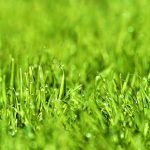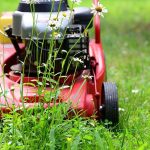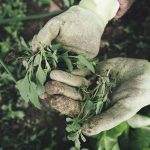Fertilizing Your Landscape In The Fall
The arrival of autumn signifies that it is time to apply fertilizer to your Landscaping. Why this time of year?
Adding fertilizer to your soil now will help ensure that plants have everything they need to grow and flourish when spring arrives next year.
Understanding fertilizer first starts by breaking down the meaning of the numbers.
Each fertilizer is typically represented by three numbers, each of which represents a different chemical element.
The first number indicates the nitrogen content. Nitrogen encourages strong growth of leaves and foliage.
Next up is phosphorus, which promotes healthy root systems.
Finally, the last number is potassium, which assists plants with absorbing trace elements from the soil and encourages proper cellular function.
Once you understand what the numbers mean, you can get started with fertilizing your property. A good place to start is with the lawn.
At the end of summer, your grass may be suffering from high temperatures and a shortage of water. A fertilizer that is high in nitrogen will help encourage new blades to grow.
For the best results, read the instructions provided by the manufacturer and follow them precisely. While some people also apply insecticides of herbicides at this time, Lawn Frogs Landscaping recommends sticking with just fertilizer.
 Applying fertilizer at the beginning of the fall season can be beneficial. However, as winter approaches, it becomes essential. Later in the fall, switch to a fertilizer that is higher in phosphorus such as a 13-25-12 mixture.
Applying fertilizer at the beginning of the fall season can be beneficial. However, as winter approaches, it becomes essential. Later in the fall, switch to a fertilizer that is higher in phosphorus such as a 13-25-12 mixture.
The phosphorus will encourage strong root growth before winter sets in. This will help your Acworth, GA lawn withstand the winter better, which in turn can allow it to become green more quickly in the spring.
Once the lawn is out of the way, you can focus your attention on your plants. Even if your perennials are on their last leg, super phosphate can help them grow strong roots before winter, resulting in healthier plants next spring.
Autumn is also the ideal time to add fertilizer to your trees and bushes.
Because most trees are located in areas with mulch, the soil is often lacking in nitrogen. Not only that, but we typically rake away leaves in the fall, removing essential nutrients that are normally provided to the trees and shrubs through decomposition.
Because of this, Lawn Frogs Landscaping advises homeowners to use up to three pounds of slow-release nitrogen fertilizer for every 1,000 square feet of soil.
This should typically be done during September or October to get the best results.
That way when spring rolls around, the nutrients will be available in the soil for the plants to utilize. If one of your trees or shrubs struggles to produce flowers each year, you can also give it a bit of super phosphate to promote blooming in the spring.
Keep in mind, though, that there are no guarantees. A plant’s location plays a significant role in whether or not it flowers as well.
Autumn also means that you should plant your bulbs. Lawn Frogs Landscaping advises against using bone meal since it can attract rodents that can eat your bulbs. Instead, try using super phosphate to encourage strong root growth. This will promote beautiful flowers the following spring.
When you fertilize in the fall, the primary objective is to help plants grow strong root systems so that they can survive the winter.
Strong root systems translate into healthier plants and more flowers and leaves in the spring.
The healthier you can get the roots of your plants, the more beautiful they will be the following spring.





